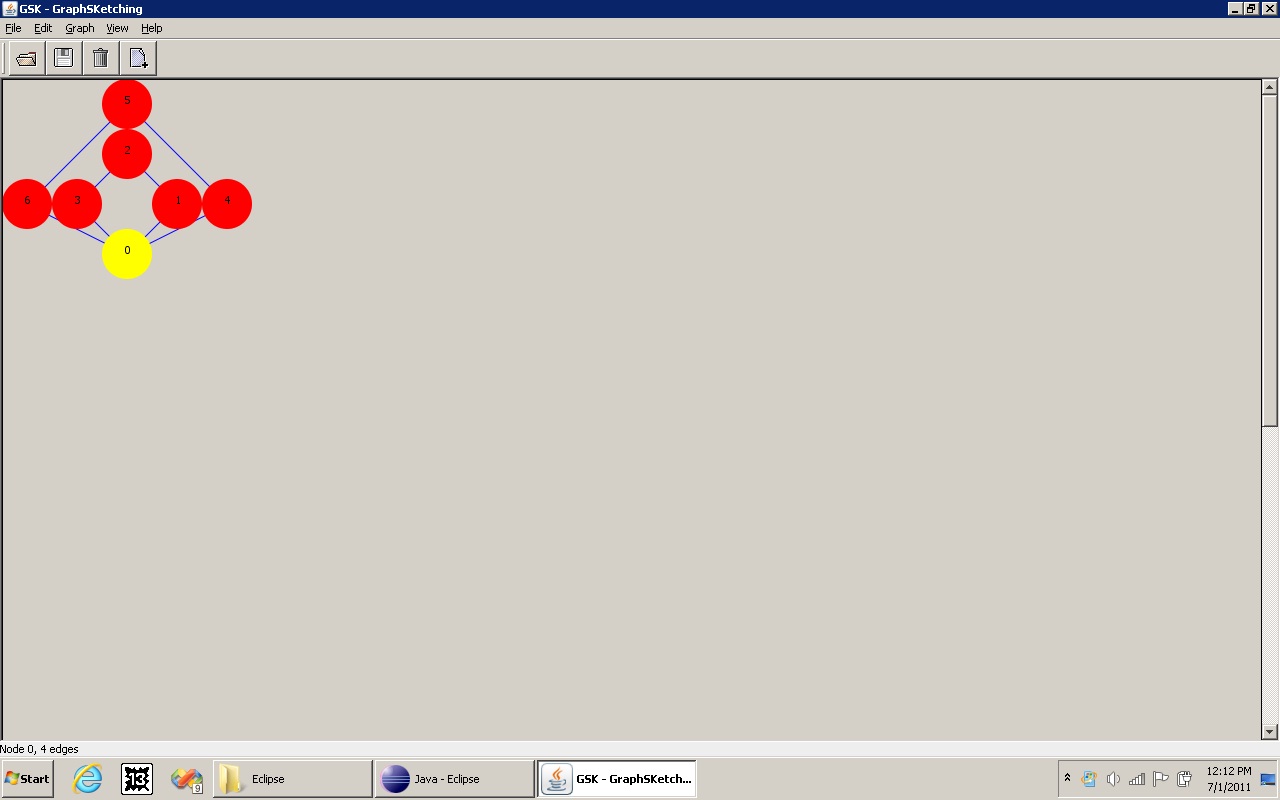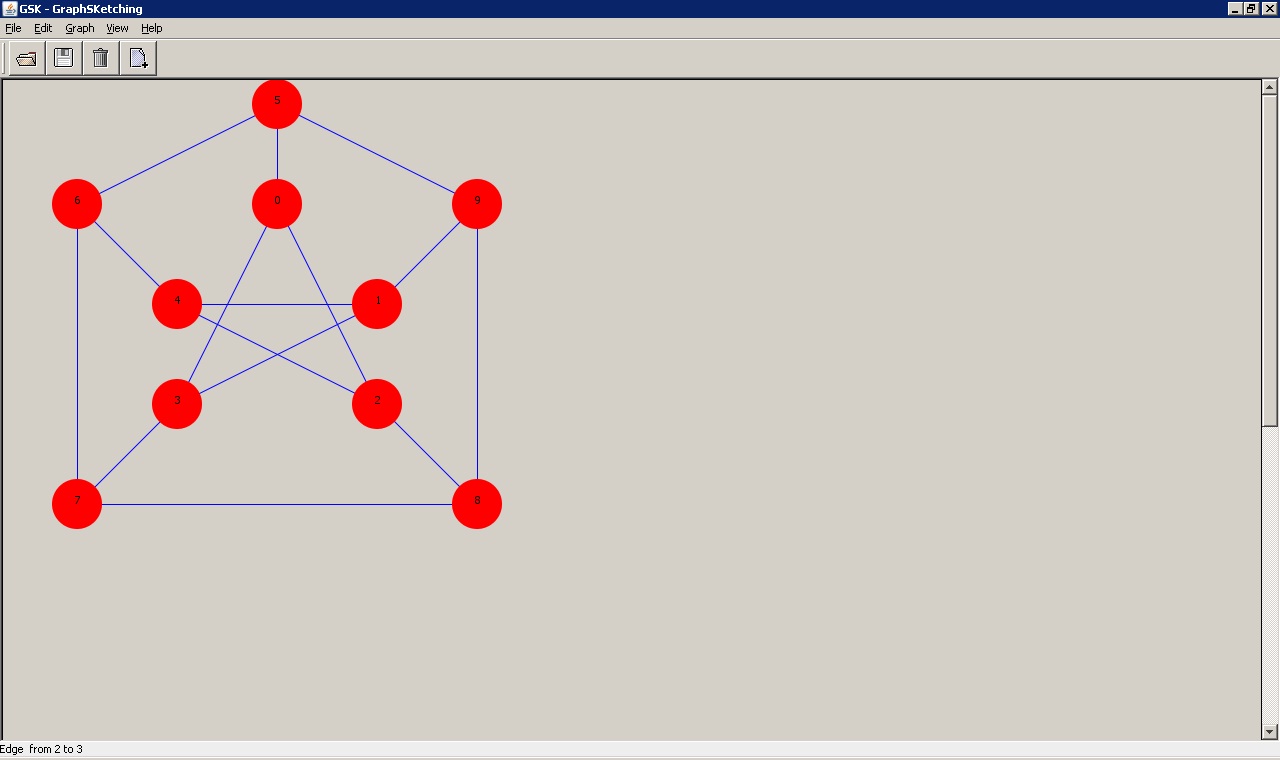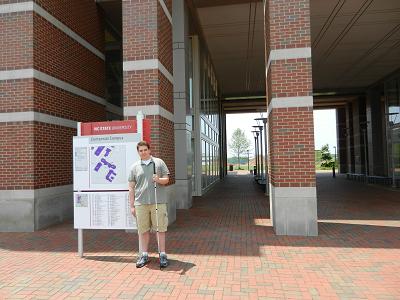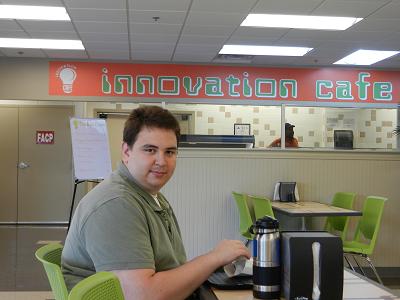Introduction
Welcome to Sean Mealin's DREU blog. This summer, I will be working with Professor Balik at North Carolina State University. We will be working on creating a tool that allows blind and sighted people to collaborate in the creation of graphs. I will use this space to chronicle everything that happens as we move forward with this project.
As the summer starts, I realize that I don't know much about what we're going to do. The only information that I know for sure, is that we're going to create a tool for graph creation that is accessible to screen readers, and intuitive enough so that people can use it with little or no training. I think that one of the first things I need to do is to talk to Professor Balik, and see what direction the project is going to be heading. I am super excited for a couple of reasons; the first is that I can't wait to work with Professor Balik. I've met her before, and she seemed very receptive to new ideas. I'm sure that between the two of us, we'll be able to come up with creative solutions to any problems that arise. The other reason I am excited is that I think that the project will not only be an interesting challenge, but it will have practical uses both in college and in a professional setting.
I can't wait until it begins.
Week 1: (May 23 through May 27)
Finally, Monday, my first day rolled around. We spent most of our day setting up our programming environment. We decided to use Eclipse as an IDE, and SVN to enable us to collaborate. It took a little time to setup because finding and installing the SVN plug-in for Eclipse was a bit confusing at first. Also Eclipse itself is a very large download.
Professor Balik also took me on a virtual tour of the network. She showed me where I can host this web site, and where I can save files to the network, if I need to.
Tuesday we spent brainstorming the requirements for our program. I think we came up with some really good ideas. We also discovered how to import a .docx file into Eclipse, and how to add that to the SVN repository.
Wednesday, we continued to work on the requirements document. We went over what we had come up with on Tuesday, and simplified it as much as possible. We changed it a bit, to meet one of our goals: the program should be useable with little to no training ahead of time.
Thursday, we worked on creating use cases in the hopes that it would help us to simplify the work-flow. We came up with examples across a wide range of disciplines, such as computer science and physics. I think that this tool is going to be much more useful than I originally imagined.
Friday, we took a break from documentation. We focused on designing layouts for various screens. Because I wasn't up-to-date on creating GUIs in java, I ended up spending most of the day reading tutorials and a book or two on GUI programming.
I think that the project is coming together really well. This week we spent most of our time on documentation and paperwork, but I think it will definitely be worth it when we actually start to program the tool.
Week 2: (May 30 through June 3)
I was ready to continue the project after week 1, but Monday was Memorial Day, so I didn't go into work. I mainly took the day off, but I spent some time creating my DREU web site.
I started off Tuesday by fixing a few small errors on my site, and posting it to the space that Professor Balik set up for me. I then continued working on getting a handle on GUIs. When I was playing around with the program's main screen, I found that when I pressed the alt key, focus did not switch to the menu bar like it is supposed to. We also spent some time working with NCSU's Disability Service Office, arranging to borrow some equipment that we needed.
On Wednesday, I came back to the alt key bug. After doing some googleing, and trying different things, I found that I could get it to set focus on the menu bar by changing to a system-specific look and feel in Java. What that means, is by default, Java GUI programs have a computer platform (Windows/Linux/Mac) independent style, which also controls how it handles input from the keyboard. The Java scheme didn't put focus on the menu bar, so I had to set it to emulate the user interface of the host system. So on a Windows computer, it has a Windows UI look and feel, while on a Linux computer, it has a Linux look and feel. I also spent time creating some of the model classes, such as Node, Edge, and the Graph class.
Professor Balik and I took a trip around lunch time to NC State's other campus, so we could stop in at the Disability Service Office. We picked up a Tactile Drawing Pad from them.
On Thursday, we spent some time going through our code to make sure that our comments were detailed enough where we could come back at a later time to expand on our work. We also discussed the various screens of our application, and how they would be laid out. The tactile Drawing Pad from the DSO that we picked up the day before was very useful. What it allowed us to do was draw what we thought the screens should look like. When you draw on the device, (which looks like a clipboard with a piece of thin plastic on it), the lines raise so I am able to feel them. After you draw an image, you remove the plastic, and put on a fresh one. When we were working on the layout, we realized that we had to be careful when switching screens, so we wouldn't lose any data about our graph. That brought up a discussion about how to handle moving from a continuous space to a discrete, precision-limited space without losing too much positional information.
On Friday, we continued talking about moving information between different spaces, and specifically how our program would handle it. We also talked about how the program would represent graphs and their components to the user. After doing some research, we came to the decision that Java itself didn't have anything useful, so we would have to draw everything ourselves. From there, I started learning about the Java 2D drawing API, and how I could use it in our program. Most of the afternoon was spent creating a proof-of-concept program for drawing images. That lead to the question, what happens if the graph is so large, that all of it won't fit on the user's screen at the same time? Professor Balik and I weren't too sure, so we decided to do some research over the weekend, and solve the problem on Monday.
This week was spent on more concrete things for our program. Now that we have an idea about the final layout, and we know how we can represent graphs on the computer, we are going to start doing some of the hardcore coding next week. I'm definitely looking forward to that.
Vacation week 1: (June 6 through June 10)
While I did some work this week, officially it was a vacation week, because of the absence of Professor Balik. But that did not stop me from getting a few things done.
On Monday, Professor Balik and I spent the first part of the day addressing the screen size issue. We decided to take the approach of implementing scrollbars that would allow the user to scroll the image as needed. After creating a proof of concept program, we decided to focus on the program's general architecture; for example, we needed to figure out what classes should inherit from abstract classes. It would have been convenient to have an accessible UML diagramming tool, which is ironic because that is one of the uses that we have identified for our graph program.
Tuesday, we spent some time creating tools and references that might help us as we continue to write the program. We created classes that would update text on the screen, but also notify screen readers of the change. We also put all of our notes into a single location so they would be easier to find. We also spent some time incorporating the official Java graphics into our program, for example the icons on the toolbar. Near the end of the day, we found some accessibility oddities in our program, but we're not sure how to fix them.
Wednesday, Professor Balik was not around, and because it's an unofficial week, I did a bit of work from my apartment. I spent some time reading up on accessibility best practices in Java. While it was somewhat helpful, it didn't give me any leads on how to solve our accessibility problems.
On Thursday, I did a little work remotely. I spent some time focusing on how the Java 2D drawing API could assist us in drawing edges. I think that's going to be one of the more difficult parts, because neither Professor Balik nor I have more than passing familiarity with that specific API.
On Friday, I didn't do any work on the project. I spent the day pursuing other activities, in the hope that returning to do more work next week may give me a fresh perspective.
For this week, we didn't get as much done as previous weeks, but that's OK considering that this and next week are vacation weeks. The way I look at it, any work that I get done now, is just putting me ahead for when I officially come back to work on June 20. Sometimes, I feel a bit frustrated by Java, because accessibility for GUIs isn't as straight forward as some other languages, such as C#. I think that if I just keep on pushing through though, we'll be able to get everything working at the end of the day.
Vacation week 2: (June 13 through June 17)
I'm still on vacation, but I still managed to get a bit done. This week, I spent a bit of time working each day, but I didn't do too much. I had the thought of making a custom control so I would have finer control over both accessibility and drawing, but I decided that there was too much overhead coding to make it worth it. Instead, I made JPanels focusable (which they typically aren't), so Jaws can find them. Once I did that, I was able to use the accessibility API to post messages to Jaws and other screen readers.
I had put in a toolbar for shortcuts for sighted people, but Jaws consistently got lost in it for some reason, so I decided to make it invisible to Jaws and other screen readers, so the application feels more like other applications. I also spent some time refactoring the code in a few classes to make it more readable. I think that it will help in the future as we add more features.
Week 3: (June 20 through June 24)
Things are finally back to normal. Vacation was fun, but it's nice to be back working fulltime. Our primary triumph this week is that we were able to get the drawing system working. Now we are able to draw undirected graphs accurately. We'll deal with directed edges later.
Another thing that we spent a lot of time on, is fixing a bug that kept on cropping up when we tried to close the program. Whenever the program was about to close, it would execute a specific method that would cancel the closing process. So effectively, there was no way to terminate the program short of killing the process in Task Manager. The problem was something in the code that wasn't setting a keyboard shortcut correctly. The code in question was from following an old tutorial for a previous version of Java. So I guess I really need to keep a closer eye on when tutorials I read were published, and for what version of Java they were meant for. We also figured out how to prevent one of our views from scolling when the arrow keys were used to move around it.
Week 4: (June 25 through July 1)
This week ended on a very happy note. Our Graph Sketching program finally contains enough functionality to allow me to draw and access fairly complex graphs. The screenshots below show our program's interface. The first screenshot contains my recreation of a graph from my discrete math final exam. During my exam, my discrete math professor had to draw it using a tactile drawing kit in order to make it accessible to me. I still had to ask him for the name of each node as I examined it. With our program the graph is now easily created by and completely accessible to both blind and sighted people. Professor Balik told me about the Petersen graph, which is often used as a counter-example in graph theory. Based on her description, I was able to draw this quite complicated graph using our program as shown in the second screenshot below.



